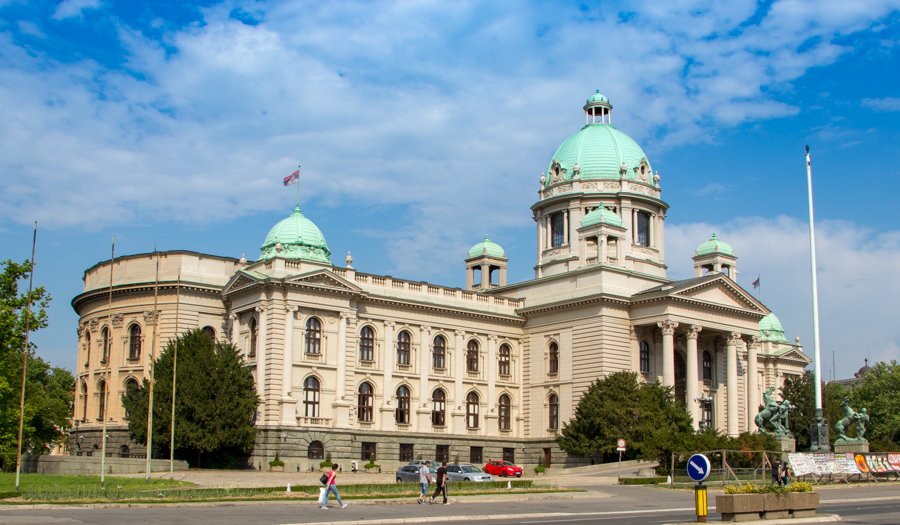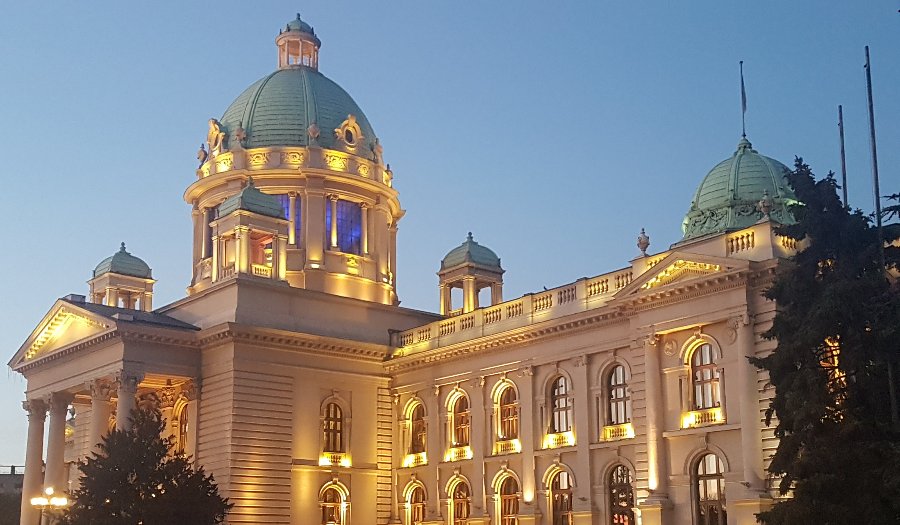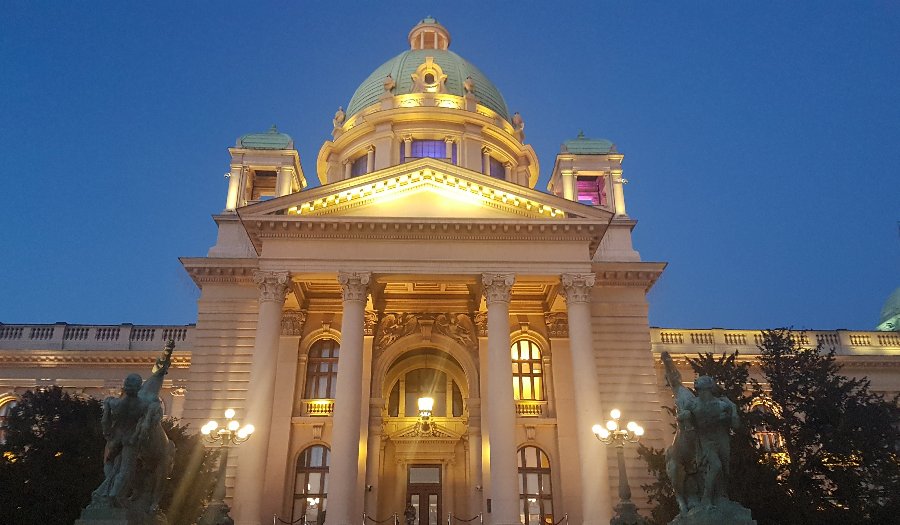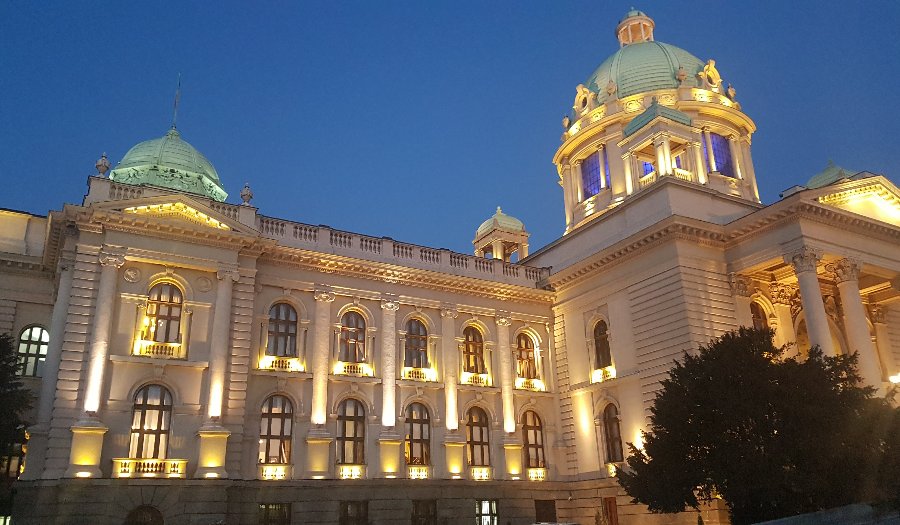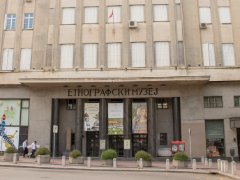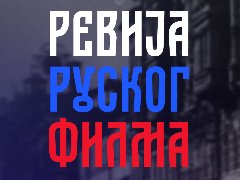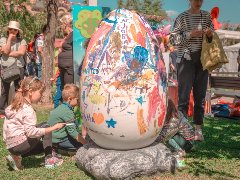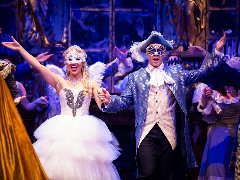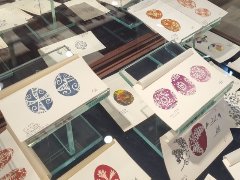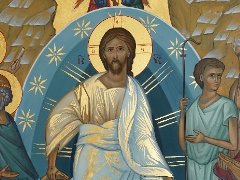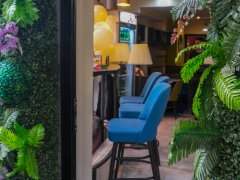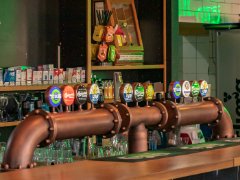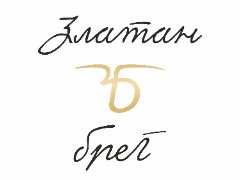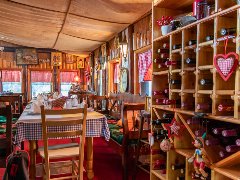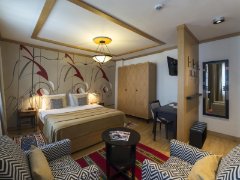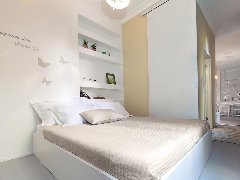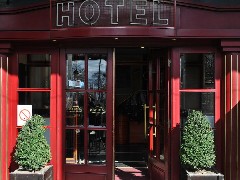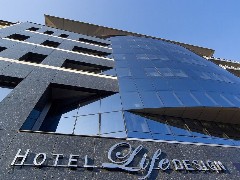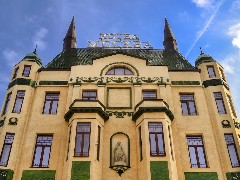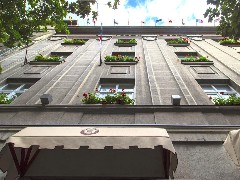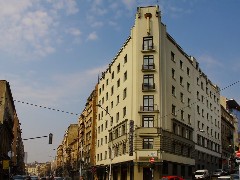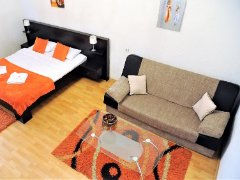The National Assembly Building was built in the vicinity of the place where the Grand National Assembly Meeting was held in November 30, 1830. At the gathering, the Turkish sultan’s imperial Edict on the rights of the Serbs was formally read out and Prince Milos was recognized as a hereditary prince.
The construction of the building began in 1907 according to the design of architect Jovan Ilkic and was completed in 1936. The building is fashioned in the manner of academic traditionalism, with rich architectural interior and artistic decoration. Interior walls are adorned with 20 fresco paintings by great masters of decorative arts. The lobbies and rooms are home to many sculptures, four of which being the most interesting ones as they represent the figures that symbolize the historical development of all three constitutional nations and the founders of royal dynasties - Tzar Dusan, King Tomislav, Prince Kocelj and Karadjordje. Two sculptural groups in front of the building - “Playfull BlackHorses”, the work of Toma Rosandic, were put up in 1938.
During it’s long history, National Assembly Building first served to members of the National Assembly of the Kingdom of Yugoslavia, then to the German civil occupation administration in Serbia, the Yugoslav Assembly and, after the break-up of SFRY, it was Federal Assembly of Serbia and Montenegro. Serbia once again became an independent country on June 5, 2006 and the building situated in Nikola Pasic Square was restored to it’s original purpose - the National Assembly Building, almost the entire century after the beginning of its construction.
The National Assembly Building was built in the vicinity of the place where the Grand National Assembly Meeting was held in November 30, 1830. At the gathering, the Turkish sultan’s imperial Edict on the rights of the Serbs was formally read out and Prince Milos was recognized as a hereditary prince.
The construction of the building began in 1907 according to the design of architect Jovan Ilkic and was completed in 1936. The building is fashioned in the manner of academic traditionalism, with rich architectural interior and artistic decoration. Interior walls are adorned with 20 fresco paintings by great masters of decorative arts. The lobbies and rooms are home to many sculptures, four of which being the most interesting ones as they represent the figures that symbolize the historical development of all three constitutional nations and the founders of royal dynasties - Tzar Dusan, King Tomislav, Prince Kocelj and Karadjordje. Two sculptural groups in front of the building - “Playfull BlackHorses”, the work of Toma Rosandic, were put up in 1938.
During it’s long history, National Assembly Building first served to members of the National Assembly of the Kingdom of Yugoslavia, then to the German civil occupation administration in Serbia, the Yugoslav Assembly and, after the break-up of SFRY, it was Federal Assembly of Serbia and Montenegro. Serbia once again became an independent country on June 5, 2006 and the building situated in Nikola Pasic Square was restored to it’s original purpose - the National Assembly Building, almost the entire century after the beginning of its construction.
